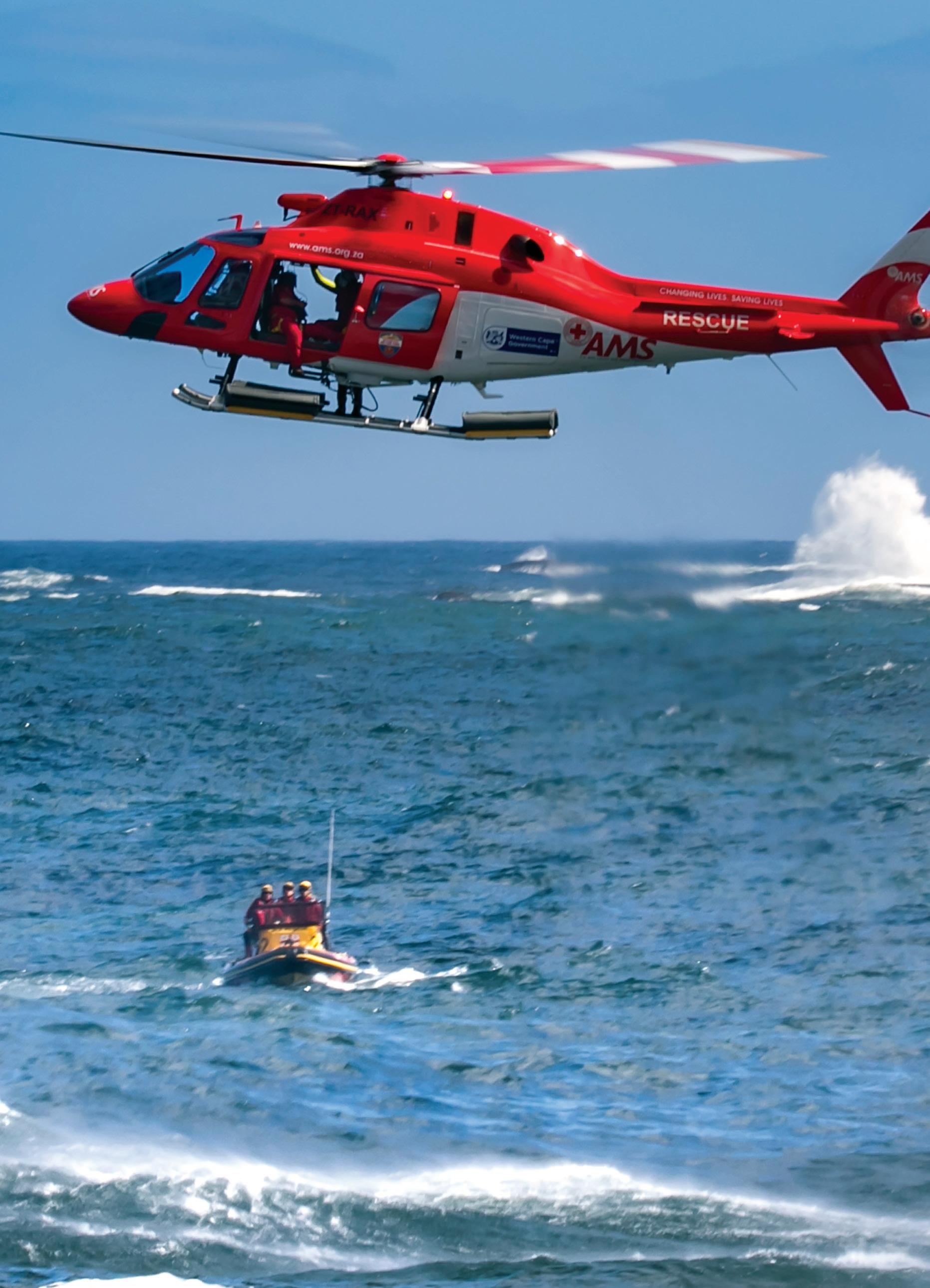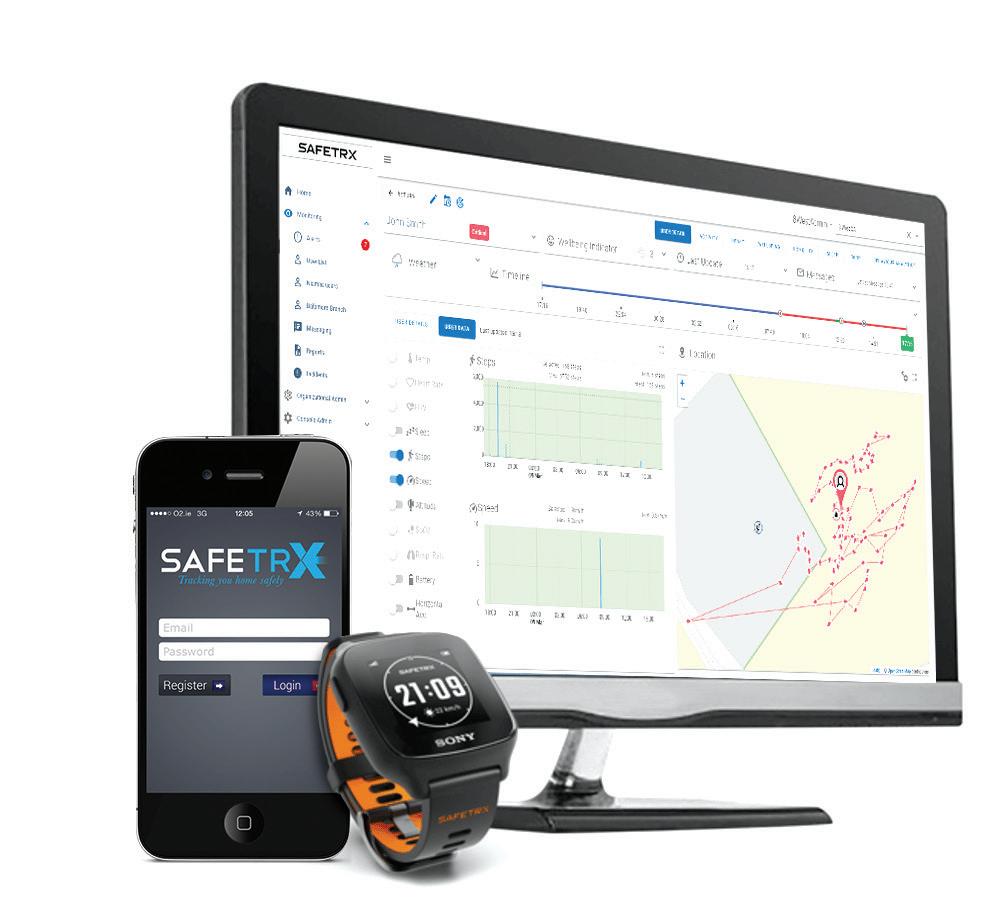
4 minute read
Paddler's family appeals: ‘PLEASE USE SAFETRX’
On Friday 26 February 2021, 46-year-old Rod Johnston launched his surfski from Bali Beach in Cape Town. He was likely planning to paddle a couple of circuits of the bay, not too far from the shore. But he had no idea of the danger he was in. Rob Mousley tells the story.
IT WAS 3PM on a classic Cape summer’s day – sunny and clear, with a strong southeasterly wind blowing directly offshore.
A few weeks earlier, Rod Johnston had decided to try surfski paddling: he’d borrowed a ski from a friend and had taken it out a couple of times from a beach near his home in Camps Bay.
Being safety conscious, Rod wore a personal flotation device (PFD) and was tethered to his craft with a safety leash.
DECEPTIVE CONDITIONS
On days like this, it can appear deceptively calm in the lee of Table Mountain. But a few hundred metres out to sea, the wind accelerates down the mountainside, lashing the water with squalls of 50 knots or more. And, of course, those howling squalls can arrive without warning as the southeaster grows in strength.
So it’s possible for a paddler to feel safe in the sheltered water close to the rocks but in extreme danger from the maelstrom of wind and spray just a few hundred metres offshore.
Adding to the risk is the water temperature. Strong southeasters cause upwellings of cold water: as the warmer surface layer is blown offshore, it’s replaced by frigid water flowing up from the deep. Earlier that day, the water temperature at Bakoven had been 8.5°C.
One can only speculate what happened, but it wouldn’t have been the first time a paddler was caught out by the conditions on the Atlantic side of the peninsula. Rod may have strayed just a little too far out to
sea or simply been caught by a squall close to shore. Whatever happened, he fell into the frigid water, lost his paddle and couldn’t get back onto his craft. Once immersed, he’d have had a very short time to remount before becoming too cold to do so.
The further he drifted out to sea, the stronger the squalls and the more difficult it would have been to paddle back into them.
THE SEARCH
Just before 7pm, he was missed when he failed to arrive for an evening appointment and the NSRI was alerted when it was suspected that he might still be at sea.
The NSRI launched both land and sea searches, with three sea rescue craft scouring the area between Oudekraal and Table Bay until midnight. They resumed the search at dawn,
assisted by the EMS/AMS Skymed rescue helicopter, which finally found Rod’s body, still tethered to the ski, on Saturday morning, some 4.5 nautical miles (8.3km) west of Bantry Point.
Like so many other accidents, this one probably had no single cause but was rather the result of a sequence of unfortunate events.
Had he bought a ski instead of borrowing one, it’s almost certain that Rod would have received safety and other advice about paddling in Cape Town at the shop.
It’s thought that he’d planned to attend a surfski school in Fish Hoek, where he would have been trained in paddling safety – but the school was closed because of the Covid-19 pandemic.
Had he attended the surfski school, Rod would have been aware that paddling solo is not recom- mended. He’d have met plenty of like-minded people and probably would have been paddling with others on that fateful day.
And, in any case, he almost certainly would have been told about the RSA SafeTrx tracking app.
ROD’S SISTER, GEORGETTE
VITAL MESSAGE
At his funeral, Rod’s devastated family requested that mourners make donations to the NSRI instead of giving flowers. They raised just over R100 000. The funds are being used to raise awareness of SafeTrx through a series of marketing campaigns.
‘If one person is saved by finding out about SafeTrx, then Rod’s death wouldn’t have been in vain,’ says Rod’s sister Georgette.

WHAT IS SAFETRX?
SafeTrx is an easy-to-use tracking app that is compatible with both Android and iPhone devices. When activated, it reads the phone’s onboard GPS and sends regular position updates to a central computer accessible by sea rescue authorities like the NSRI.
Before setting off on a trip, you can tell SafeTrx what your sail plan is, what craft you’re on, where you’re going and what time you expect to arrive. If you don’t explicitly tell SafeTrx that you’ve arrived, the alarm is automatically raised. You can also raise the alarm at any time using the app; the NSRI monitors SafeTrx 24/7 from its Emergency Operations Centre.
You can share your trip with family or friends on shore too, so that they can track your progress and be on standby should anything go wrong.
Rod had a waterproof pouch with him that contained his car keys. If he’d slipped his phone into the pouch and had used SafeTrx, he would have greatly increased his chances of survival .









